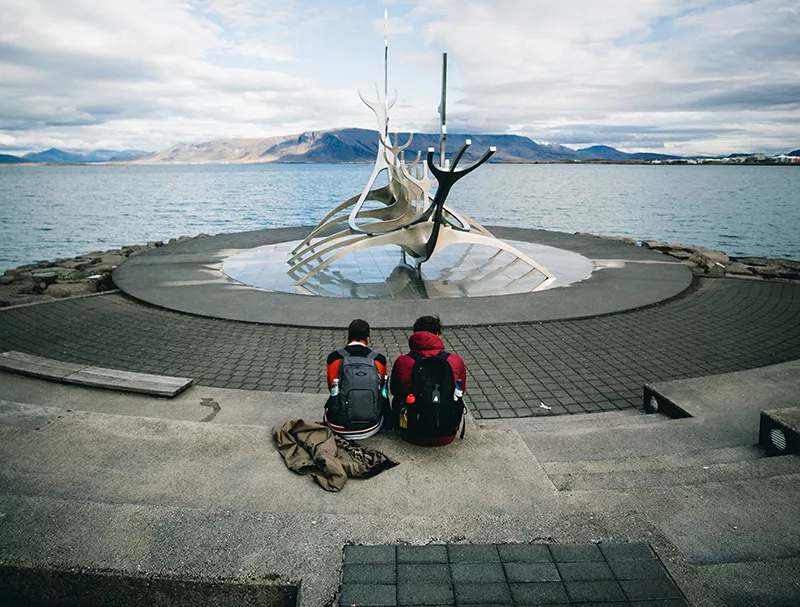We speak to Inga Hlín Pálsdóttir, Managing Director of Visit Reykjavik, as she tells us more about the organisation’s exceptional work and how it continues to respond to an ever-changing tourism industry.
Q&A WITH VISIT REYKJAVIK
Visit Reykjavik is the official tourism organisation of the Icelandic city’s capital area.
It was established in 2023 by six municipalities and the tourism industry who came together to establish a new and improved travel association with the shared goal of fostering better collaboration and the sustainable development of the city.
Today, the destination marketing and management office promotes and develops Reykjavik in a sustainable way, with a focus on increasing economic activity. Through collaboration with partners in the tourism, transportation, and cultural sectors, Visit Reykjavik enhances the visitor experience and showcases all that the city has to offer.
We speak to Managing Director, Inga Hlín Pálsdóttir, about the organisation’s sustainability initiatives, the challenges it faces, and the current state of the tourism industry in Reykjavik.
Firstly, can you talk us through the origins of Visit Reykjavik and its initial vision?
Inga Hlín Pálsdóttir, Managing Director (IHP): Visit Reykjavik is the official visit organisation of the city, responsible for worldwide marketing. We are the first point of contact for tourism, marketing, information, and events in the Reykjavik capital area.
Furthermore, the creation of Visit Reykjavik is part of the Iceland Tourism Strategy and aligns with the recommendations of the United Nations World Tourism Organisation (UNWTO), which advocates the adoption of destination management as a pathway towards sustainability.
The vision of Visit Reykjavik centres around sustainability and fostering good communication among residents, tourists, companies, and other stakeholders in the area. This is seen as the key to future development, enhancing the attractiveness of destinations within the area and boosting their competitiveness and sustainability.
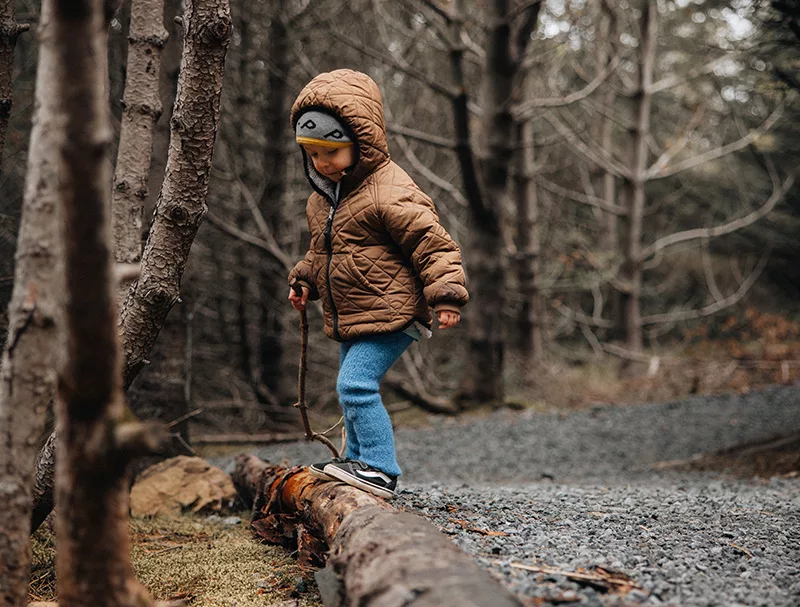
What are your organisation’s current goals?
IHP: Visit Reykjavik upholds the vision that tourism should coexist in harmony with its natural and social environment. We believe that our focus should not only be on attracting visitors but also fostering collaboration among all stakeholders and implementing responsible and sustainable initiatives and practices.
Our destination strategy and goals centre around sustainability with a special focus on introducing and developing new areas within the whole Reykjavik capital area for travellers, encouraging and showing people how to slow down and stay longer in the area, assuring quality of life in the capital area, and being a welcoming and nurturing destination.
How do you market Reykjavik as a destination?
IHP: We promote Reykjavik as an all-year-round destination, offering unique experiences in all seasons. At the heart of our marketing initiatives lies a steadfast commitment to sustainability.
The city of Reykjavik and its adjacent municipalities are all powered and heated with renewable sources. The entire region benefits from geothermal heating, which has been the principal heating method in most Icelandic towns since the 1940s, and all electricity consumed in the Reykjavik capital area is sustainably sourced, generated by both geothermal and hydro power.
The eco-friendly nature of the region’s power supply not only underscores Reykjavik’s dedication to sustainability but also bolsters its appeal as a green and responsible tourist destination. Any visitor can trust that mundane things such as taking a shower in a hotel room or driving around in a rented electric vehicle (EV) truly are ecologically responsible actions.
The local authorities of the Reykjavik capital area strive actively to create an inclusive atmosphere of acceptance and warmth for visitors and inhabitants alike. In 2024, our annual Reykjavik Pride festival brought the entire nation together for the 25th time to celebrate the freedom of being and living as you are. An overwhelming majority of the residents of Reykjavik stand firmly behind the notion of inclusiveness and take great pride in values such as gender equality.
Reykjavik also extends a warm welcome to families with children. It provides a secure environment with diverse playgrounds and good recreational opportunities, including family-friendly public pools.
For years, Iceland has been recognised as one of the world’s safest countries by various institutions that analyse crime-related data. Visitors to Reykjavik can anticipate an inviting and safe destination, making it an ideal choice for family vacations.
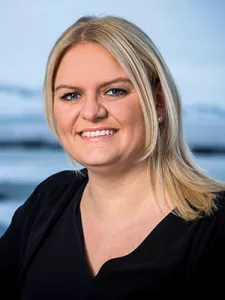
“By showcasing the various facets of the city, we aim to promote a slower, more exploratory, and sustainable approach to travel”
Inga Hlín Pálsdóttir, Managing Director, Visit Reykjavik
Do you have any sustainability or environmental initiatives that you’d like to highlight?
IHP: We are currently developing travel routes for the Reykjavik capital area. The aim of this project is to highlight the diverse experiences and areas of Reykjavik, encouraging visitors to explore beyond the city centre.
Another significant aspect of this project is its emphasis on sustainable travel. We are dedicated to offering comprehensive information on eco-friendly transportation options within the capital area, whether it’s walking, cycling, or using public transit.
By showcasing the various facets of the city, we aim to promote a slower, more exploratory, and sustainable approach to travel. This approach allows visitors to fully appreciate the beauty and charm of Reykjavik and its surroundings, contributing to a more enriching and environmentally conscious travel experience.
Additionally, we have been mapping out recreational areas and hiking trails for both travellers and inhabitants in cooperation with the municipalities in the Reykjavik capital area. The project’s goal is to inspire exploration of the city’s natural wonders – from mountain vistas and rolling hills to the intricate tapestry of lava fields and beaches, as well as diverse avian habitats.
Until now, there has not been a comprehensive and accessible information source dedicated to hiking and outdoor experiences throughout the entire region. Visit Reykjavik is thus enhancing opportunities for both visitors and residents to explore and appreciate the natural beauty in and around the city.
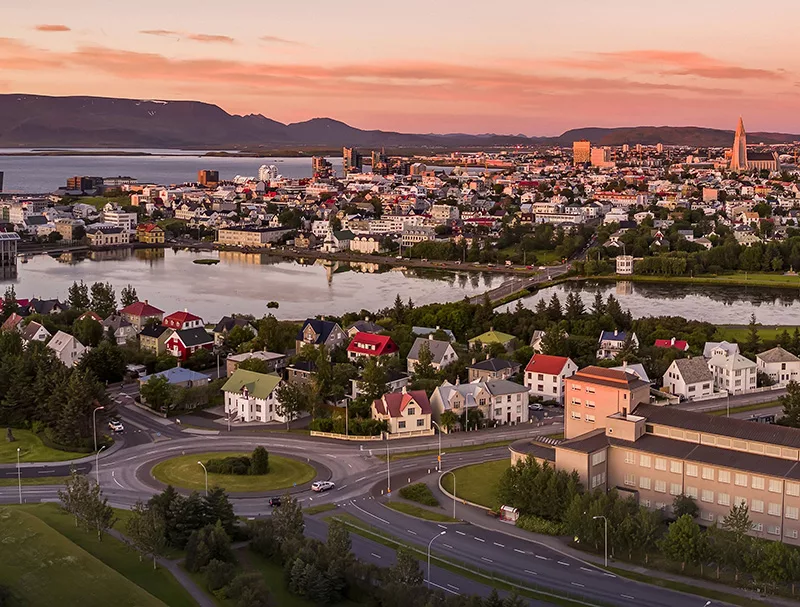
Are there any interesting projects in the pipeline you wish to highlight?
IHP: For some time, Reykjavik lacked a proper museum to showcase one of the main cultural treasures of Iceland – the medieval manuscripts containing the Icelandic Sagas and the Eddas.
These manuscripts are the principal source material for all later adaptations of Norse cultural heritage, such as Marvel’s Thor movies and the Netflix series Vikings.
In 2023, a new building named Edda was inaugurated near the Icelandic National Museum and the University of Iceland. This building houses institutions responsible for researching and disseminating Icelandic medieval culture and was designed to present and show the public the physical medieval manuscripts. After a long preparation period, the Edda Museum will open in the winter of 2024-25.
“Overall, it is difficult not to be optimistic about the future of tourism in Reykjavik as new and exciting facilities for visitors are continuously being opened in the area and the cultural life of the city continues to flourish”
Inga Hlín Pálsdóttir, Managing Director, Visit Reykjavik
What trends are transforming the tourism industry in Reykjavik, and how are you utilising them?
IHP: The global tourism industry is undergoing a digital transformation, and Reykjavik is no exception.
In recent years, Icelandic start-ups have introduced a range of innovative travel solutions, from virtual reality (VR) experiences that allow museum visitors to reenact historical events to infrastructure solutions that assist businesses with their day-to-day operations.
As artificial intelligence (AI) becomes more prevalent, local companies are expected to adopt solutions that enable communication with clients in different languages, provide information, and enhance the overall visitor experience.
Visit Reykjavik aims to increase the digital availability of its products, starting with the Reykjavik City Card, which is transitioning from a physical card to a digital format. While the physical card has been successful for years, it is essential to recognise the growing demand for a seamless digital experience.
Elsewhere, travellers are increasingly seeking ways to have a more positive impact on the destinations they go to. Visit Reykjavik is committed to helping tourists in the Reykjavik capital area find the most environmentally friendly routes and modes of travel.
Social media plays a crucial role in this initiative, as Visit Reykjavik not only shares the vibrant local scene throughout the seasons but also highlights opportunities for environmentally conscious visitors to make the most of their stay.
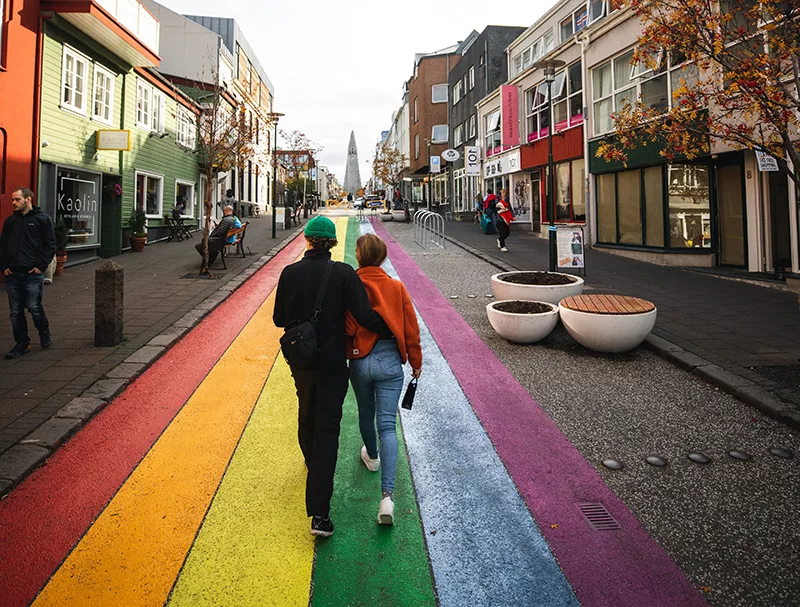
What challenges does the tourist industry in Reykjavik face?
IHP: Since 2021, the Reykjanes peninsula region, south of Reykjavik, has been the centre of seismic and volcanic activity.
The fact that this highly seismic active area is located only around 40 kilometres (km) from the city centre can sound alarming to many visitors. The truth is, however, that these developments do not affect the daily life of the inhabitants of the capital.
The seismic activity has resulted in several volcanic eruptions, none of which have posed immediate danger to travellers but have had both a positive as well as a negative impact on the tourist industry.
The first eruptions were in an area which was accessible to the public, thus it became possible to hike to an erupting volcano in the immediate vicinity of the city, which had a positive impact on the demand to visit Reykjavik.
Geologists are thoroughly monitoring the volcanic activity and predict that eruptions will continue for some time. However, these eruptions have had no impact on flight travel and are very unlikely to do so.
Iceland remains a safe destination as these events are centred in a relatively small area. Visit Reykjavík and other tourism organisations in Iceland will continue to inform visitors and the media about developments and find ways to manage the interest of visitors in these fascinating events.
Are you optimistic about the future of the tourism industry in Reykjavik?
IHP: Since the beginning of tourism in Iceland, Reykjavik has been the gateway to other destinations around the country.
Around 90 percent of all visitors to Iceland visit Reykjavik during their stay, some for just one night, while others stay longer. The city is the ideal destination in the winter as the capital offers a diverse selection of restaurants, hotels, and cultural events during the season when days are short.
Overall, it is difficult not to be optimistic about the future of tourism in Reykjavik as new and exciting facilities for visitors are continuously being opened in the area and the cultural life of the city continues to flourish.
We hope that Visit Reykjavik will be able to help them discover all the good things that make ours such a great city.
